Posted by Elena del Valle on April 6, 2010
Information provided by our Event Partner

August 16-20
As the reach of internet population continues to grow, SES looks to trace the economic implications and opportunities for marketers. SES San Francisco has compiled a new and ambitious program with 90% of our agenda featuring all new content.
Registration has now opened. SAVE up to $600 on a pass when you register now through June 4. Save an additional 15% when you enter 15MPR.
An Event Not to Miss
Some of the key things you’ll find at SES San Francisco include:
* New session tracks tailored for marketers at every experience level.
* Unique intimate networking events to share and exchange new search techniques.
* New product demonstrations and technical insight from industry leading vendors and service providers on our expo hall floor.
* Targeted training workshops and site clinics individual attention and critiques.
* Keynotes and panels from the most exciting speakers in the sector.
San Francisco SEO Services: A Deep Dive into Digital Excellence
Posted by Elena del Valle on April 5, 2010
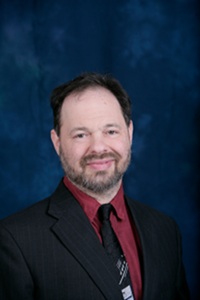
Author Shel Horowitz
Photo: Shel Horowitz
A podcast interview with Author Shel Horowitz is available in the Podcast Section of Hispanic Marketing & Public Relations, HispanicMPR.com. During the podcast, Shel discusses the issues relating to green marketing based on recently the published book Guerilla Marketing Goes Green, which he coauthored (see Authors share green marketing insights), with Elena del Valle, host of the HispanicMPR.com podcast.
Self described as an ethical and green marketing expert, book shepherd, writer, international speaker, consultant, community organizer, and frugalist Shel’s green efforts began with a one-toddler action against smokers at his parents’ party when he was three years old. Shel has been involved in environmental and social change movements his whole life.
In 1972, at age 15, he was involved in a community group that opposed a nuclear power plant proposed very near New York City (a proposal that the utility company quickly withdrew). A veteran of the 1977 Seabrook occupation, his first book, written when he was only 22, was about why nuclear power makes no sense. Shel is also the author of the e-book, Painless Green: 111 Tips to Help the Environment, Lower Your Carbon Footprint, Cut Your Budget, and Improve Your Quality of Life-With No Negative Impact on Your Lifestyle.
To listen to the interview, scroll down until you see “Podcast” on the right hand side, then select “HMPR Shel Horowitz ” click on the play button below or download the MP3 file to your iPod or MP3 player to listen on the go, in your car or at home. To download it, click on the arrow of the recording you wish to copy and save it to disk. The podcast will remain listed in the April 2010 section of the podcast archive.

Click here to buy Guerrilla Marketing Goes Green
Posted by Elena del Valle on April 2, 2010
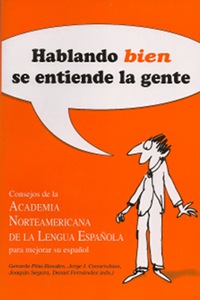
The Academia Norteamericana de la Lengua Española (North American Academy of the Spanish Language) wants Spanish speakers in North America to maintain good Spanish language standards. Toward that goal the New York based nonprofit organization published, Hablando bien se entiende la gente consejos idiomáticos de la Academia Norteamericana de la Lengua Española (Santillana USA Publishing Company, $14.99), a 188-page softcover book with Spanish language tips and advice.
“Hablando bien se entiende la gente has been very well received. I think that a plus of the book is its tone. We tried to avoid a professorial, academic tone, in favor of a lighter approach,” said Gerardo Piña-Rosales, president of ANLE, by email. “ANLE does not condemn any variety of Spanish spoken in the U.S.; we merely wish to remind people that, like any other language, Spanish has its own rules, and they should be followed. An additional problem is the influence of English on Spanish.”
The book, published in Spanish this year, was edited by Piña-Rosales, Jorge I. Covarrubias, Joaquín Segura who are members of the organization’s board of directors; and Daniel Fernández. It includes 45 illustrations by Héctor Cuenca. Eight men: Joaquín Badajoz, Emilio Bernal Labrada, Antonio Culebras, Fernando A. Navarro, Antonio Pamies, Luis Pérez Botero, Luis Ríos, and Mordecai Rubín; and one woman, Vanessa Lago Barros are listed as contributors.
The book is divided into the following six sections: Las apariencias engañan, Las cosas claras y el chocolate espeso, A nadie le viene mal aprender a conjugar verbos como el verbo amar, ¡Aplique bien las reglas de la gramática!, ¡Escríbalo y pronunciélo bien!, y ¡Conozca su idioma!
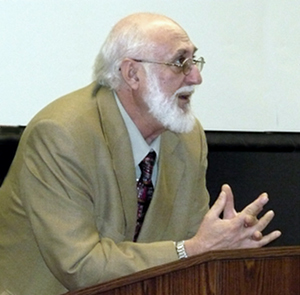
Gerardo Piña-Rosales, president, ANLE
“Our goal is not to police language usage but to help language users use Spanish so that it can be understood by all our Spanish-speakers,” said Piña-Rosales in a press release. “We hope that these ‘language capsules’ will help people who have doubts and want to use Spanish correctly. No one can dictate how people speak, but we can help those who write or work in communications fields use Spanish in ways that reflect universal usage.”
Founded in 1973, the Academia Norteamericana de la Lengua Española (ANLE) is the youngest of 22 national academies that make up the Asociación de Academias de la Lengua Española, an association of Spanish language academies across international borders.
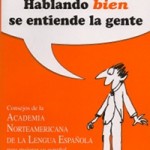
Click here to buy Hablando (bien) se entiende la gente
Comments:
Filed Under: Books
Posted by Elena del Valle on March 31, 2010
Marketing Doesn’t Get More Direct than This
By Ricardo Quayat
Executive Creative Director, Rauxa Roja

Ricardo Quayat, executive creative director, Rauxa Roja
Photos: Rauxa Roja
Hispanic culture has always centered on “conversation and community” – that sense of belonging to something bigger than oneself. Combine this with the fact that more than 23 million Hispanics are online (more than half the Hispanic population)1, and it’s easy to see why social networking, as an extension of this community-centric way of thinking, is experiencing its largest audience boon within this segment. Ethnic minorities in fact visit social networking sites more frequently than non-Hispanic Whites 2, with Hispanics leading the way. Younger than the general population, and on the move in socioeconomic terms, this emerging market has the potential to redefine mainstream products and services through a viable and rapidly growing connection to social media.
Click here to read the complete article Reshaping Hispanic Marketing through Social Media
Posted by Elena del Valle on March 29, 2010

Photos: GolTV, LatCel
GolTV, a soccer network, is convinced a high percentage of Latinos carry cell phones, go online daily and prefer to do business in Spanish. The company is hoping Spanish speaking Latinos in the 25 United States Latino markets, including Puerto Rico, where it has a presence want to stay informed about the latest in soccer news. It teamed up with LatCel, a Latino mobile entertainment company, to offer fans of the sport the latest updates via their cell phones through GolTV Móvil. The new Spanish-language mobile service, located at m.goltv.tv, promises soccer fans, mostly men, instant access to international soccer news, scores, and video highlights.
LatCel built and manages the mobile platform and its capabilities, as well as the relationships with the cellular operators. GolTV’s role is to provide the content, including the news feeds, and video highlights. Promotion will be ongoing and target the network’s existing audience; marketers will rely heavily on network on-air promos, website advertising on the network portal (goltv.tv), social media efforts, a bilingual press release and an e-newsletter.
According to a company representative, the network has high penetration of Hispanic households in the top 25 Hispanic markets. The new platform is being promoted to those who likely already watch the network who want to stay connected to their favorite leagues, teams and tournaments while on the go.
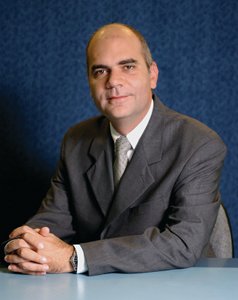
Rodrigo Lombello, COO, GolTV
“We are promoting GolTV Movil to the soccer fan on the go who wants to stay connected to their favorite leagues, teams and tournaments. GolTV Movil is part of our commitment to be the all-in-one resource for the fútbol fan, as the mobile platform features instant cell phone access to the top news, scores and highlights from the international soccer scene,” said Rodrigo Lombello, chief operating officer for GolTV, via email.
GolTV Móvil offers a video and text message alert subscription product and a mobile portal. According to a press release, GolTV Móvil users will be able to follow the network’s commentator blogs, check programming schedules and view match scores. Short video highlights of GolTV programming, including news from Spain’s La Liga and Germany’s Bundesliga, will be on the mobile portal.
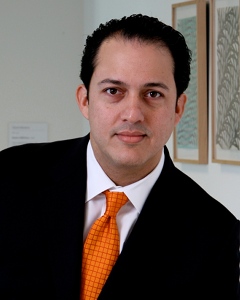
Jorge Rincón, CEO, LatCel
“Soccer draws a consummate, avid and loyal fan base, and GolTV has proven itself to be the trusted go-to resource for passionate Hispanic soccer fans,” said Jorge Rincón, chief executive officer of LatCel, a company created through a joint venture between WAU Móvil and Venevision International. “With GolTV we become the leader in mobile soccer content for Hispanic audiences.”
Founded in 2003 and led by Enzo Francescoli, chief executive officer and former international fútbol player, GolTV is touted as the only bilingual U.S. soccer network. The all-soccer network serves over 6,000 hours of soccer made up of more than 4,200 hours of match play and a mix of soccer programming, including a weeknight soccer news program, GolTV News. LatCel provides content management and services to wireless carriers, brands and media companies.
Posted by Elena del Valle on March 26, 2010

How to Sell Your Privately Owned Company A Basic Guide for Independent Business Owners
Photos: ERV Productions, Inc.
In How to Sell Your Privately Owned Company A Basic Guide for Independent Business Owners (ERV Productions, ) Eric R. Voth and six other businessmen share how-to ideas for business owners who want to sell their companies. Voth became involved as a business transaction consultant when he sold his own business in 1993. The authors first look at the types of issues a company owner should take into account before deciding to sell his or her business.
They also examine the steps to take to ensure the business is ready to sell, finding help selling the business, determining a sales prices, preparing a plan to sell the company, finding a buyer, making a good sale, and finalizing the sale and moving on.
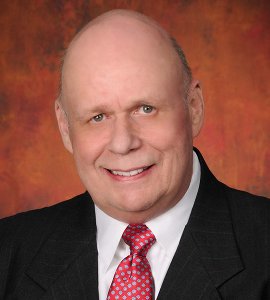
Author Eric R. Voth
In addition to Voth, the book lists profiles for two of the contributing authors: Andrew Robertson, CBI, a certified business intermediary based in California; and George Siercho, an accredited business coach based in New Jersey. The other four contributing authors are Kerney Laday, Doug Ortega and David Mahmood of Dallas, Texas; and Scott D. Mashuda of Pittsburg, Pennsylvania.
The 196-page softcover book is divided into eleven chapters: Making the Decision to Sell Your Business, Getting the Right Help, Putting a Price Tag on Your Business, Finding the Right Buyer for Your Business, Making the Right Deal, Successfully Closing the Sale – and the Door, In Conclusion, Glossary of Terminology, Internet Resources and Words of Caution, and Profiles of Contributing Writers.
According to promotional materials, Voth is a serial entrepreneur and investor who also provides matchmaking services to business sellers to merger and acquisition middlemen, investment bankers and business brokers. He is co-author with Ron Myers of The New Owner: Making the Transition from Employee to Employer.

Click here to buy How to Sell Your Privately Owned Company
Comments:
Filed Under: Books
Posted by Elena del Valle on March 24, 2010

Food product labels include a list of ingredients
Photo: HispanicMPR.com
Can you tell which of the following four sweeteners, fructose, dextrose, sucralose and acesulfame potassium, is natural and which is artificial? If you know that the first two are natural sugars and the other two are artificial sugars you may be among 4 percent of surveyed respondents who knew the answer. The other 96 percent were not be able to identify the difference. Knowing what ingredients are contained in a product only helps, some advocates of enhanced food products labeling argue, if consumers know what the ingredients are.
If, like in this artificial versus natural sweeteners example, they don’t know a natural sweeter from any other ingredient listing the ingredients may offer few insights when consumers are making purchasing decisions based on nutritional content. Experts point out that often consumers have heard of the brand names like Equal but do not know the generic name like aspartame.
The confusion may be aggravated by the significant increase in sweeteners since labeling regulations began. Where there used to be five sweeteners there are now 27, according to a recent The Palm Post article. In 2005, the Sugar Association filed a petition with the Food and Drug Administration (FDA) requesting a labeling change to make it clear to buyers when there are artificial sweeteners in a product. A study, conducted by Harris Interactive and commissioned by the Sugar Association, indicates most parents of children 18 and younger prefer to avoid artificial sweeteners for their children.
With the high incidence of diabetes, obesity and chronic diseases related to dieting some believe truth and clarity in labeling are more important than ever. Among Latinos many of whom are at high risk of diabetes (see Exercise specialist, researcher explore diabetes issues relevant to Latinos) the issue may be aggravated by cultural practices and preferences and labeling, especially of chemical sounding and unfamiliar ingredients, may do little to help. That is not even taking into account Spanish dominant Latinos who have difficulty reading labels in English.
Executives at the Center for Science in the Public Interest are so convinced of the public confusion about labels that in December 2009 they sent a 150-page report, Food Labeling Chaos: the Case for Reform, to the FDA about false and misleading food labels. The report emphasizes three problem areas: the Nutrition Facts Panel, ingredient labels and false and misleading health-related claims.
They highlight a cereal (Kashi, owned by Kellogg) that promises “healthy arteries” from green tea ingredients although there is no FDA approval of such a relationship (between green tea and healthy arteries); an English muffin brand (Thomas’ Hearty Grains English Muffins) that touts whole grain although the main ingredient is “unbleached enriched wheat flower;” and fruit juices (Gerber Graduates Juice Treats) with pictures of fruits on the labels that are not contained in the juices.
The Center for Science in the Public Interest dual missions are to “conduct innovative research and advocacy programs in health and nutrition, and to provide consumers with current, useful information about their health and well-being.”
Posted by Elena del Valle on March 22, 2010

William Perez, Ph.D., Author, We Are Americans
Photo: William Perez, Ph.D.
A podcast interview with William Perez, Ph.D., author, We Are Americans Undocumented Students Pursuing the American Dream (see California professor shares findings on United States undocumented youth) is available in the Podcast Section of Hispanic Marketing & Public Relations, HispanicMPR.com. During the podcast, William discusses the issues relating to undocumented students in America based on his recently published book with Elena del Valle, host of the HispanicMPR.com podcast.
Born in San Salvador, El Salvador William came to the United States in the early nineteen eighties at the age of 10 to escape the civil war that began in 1979. He spent his remaining childhood in Pomona, California, attended Pomona College, and later earned a Ph.D. in child and adolescent development from Stanford University.
A professor at Claremont Graduate University, he is an emerging leader on research that examines the social and psychological development of immigrant and Latino students. He strives to brings depth of research experience to the complex problems of academic achievement and higher education access. His research has been funded by the Haynes and Fletcher Jones foundations. He currently lives in the Los Angeles neighborhood of Los Feliz where he enjoys hiking the trails in nearby Griffith Park. He competes in triathlons and is an avid fan of the local indie-rock scene.
To listen to the interview, scroll down until you see “Podcast” on the right hand side, then select “HMPR William Perez” click on the play button below or download the MP3 file to your iPod or MP3 player to listen on the go, in your car or at home. To download it, click on the arrow of the recording you wish to copy and save it to disk. The podcast will remain listed in the March 2010 section of the podcast archive.

Click here to buy We Are Americans
Posted by Elena del Valle on March 19, 2010

Roberto Carlos in concert
Photos: AR Entertainment
Beginning April 10, 2010, Brazilian crooner Roberto Carlos will tour the United States, Canada, Mexico, Central America and Peru while celebrating his 50 years in the business. Eight of the 15 concerts will be in the United States.
This cycle of presentations began with a historical concert last April in Cachoeiro de Itapemirim, Espírito Santo, Brazil, the city where Roberto Carlos was born and where his career began when he was nine years of age. The artist, who has sold over 100 million records according to promotional materials, went back to his city after a 14-year absence, with a concert at the local stadium in Sumaré.
This year he will celebrate his birthday in public at the Radio City Music Hall in New York on April 16. Known for songs such as Qué Será De Ti, Amada Amante and Cama Y Mesa, Roberto Carlos has performed more than 24 concerts in 20 cities of Latin America and Brazil as part of this tour. This new stage of the tour begins on April 10 at the American Airlines Arena in Miami, and ends on June 5 in Panama City.

Roberto Carlos
The venues where he will perform are April 14 at Boston Agganis Arena, April 16 in New York City Radio City Music Hall, May 4 in Lima, Peru’s Estadio Explanada Monumental, May 8 at the Mexico City Auditorio Nacional, May 13 in Guadalajara, Mexico, May 15 at the Monterrey Arena de Monterrey, May 22 at the Chicago Rosemont Theater, May 23 at the Toronto Massey Hall, May 26 at the San Diego, California San Diego Sports Arena, May 28 at the San Jose, California HP Pavilion, May 29 at the Los Angeles, California Nokia Theater, May 30 at the Santa Barbara, California Santa Barbara Bowl, June 3 at the Costa Rica San Jose Ricardo Saprisa, and finally June 5 at the Panama Panama City Arena Roberto Durán.



























